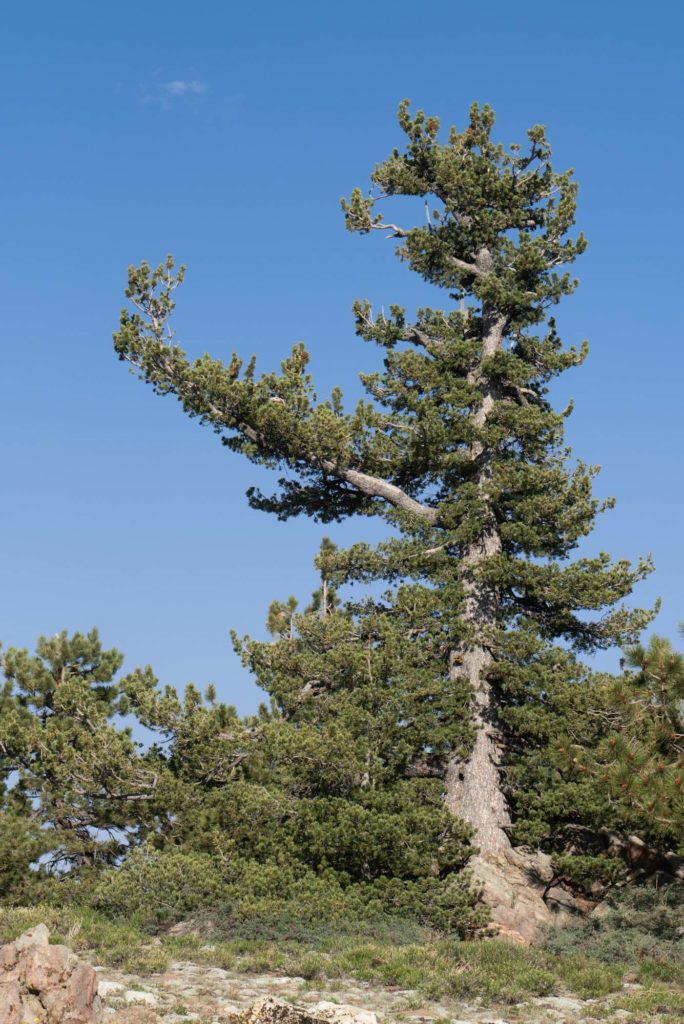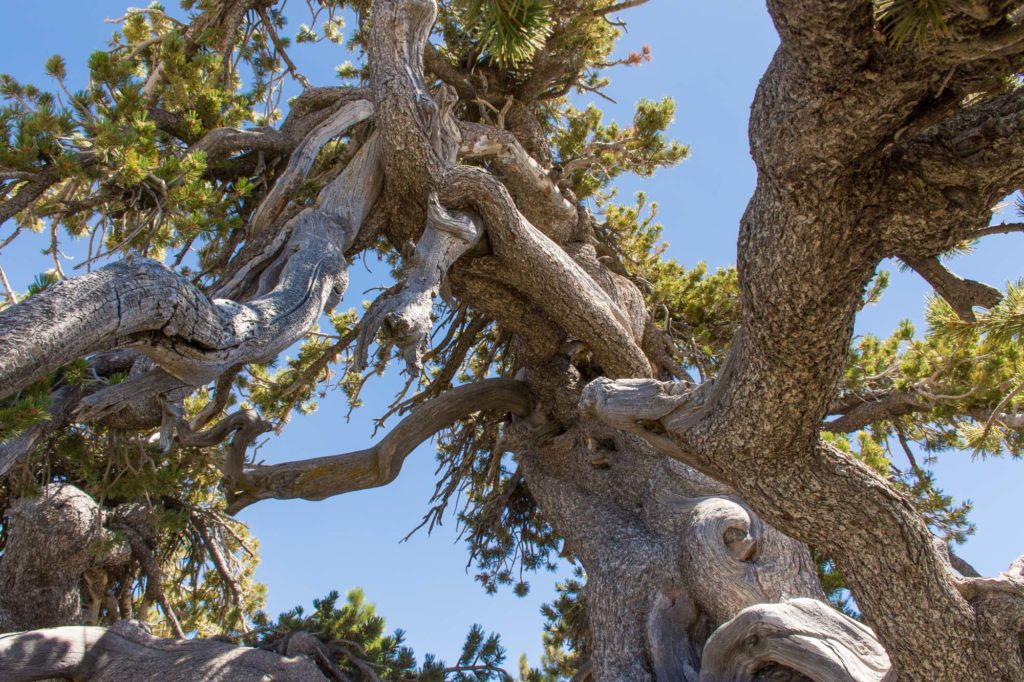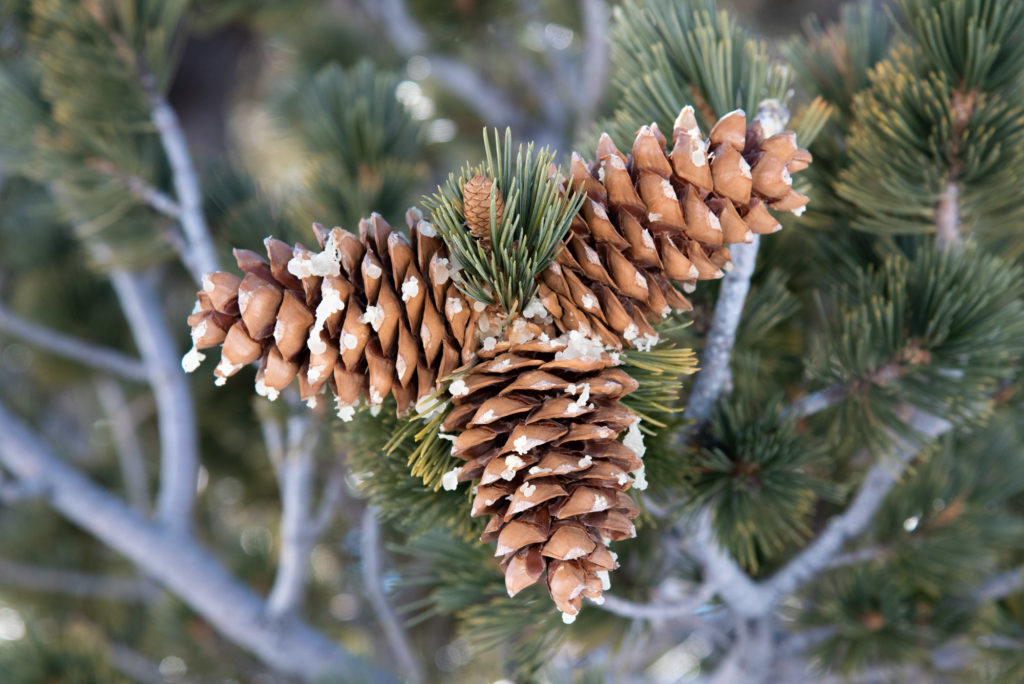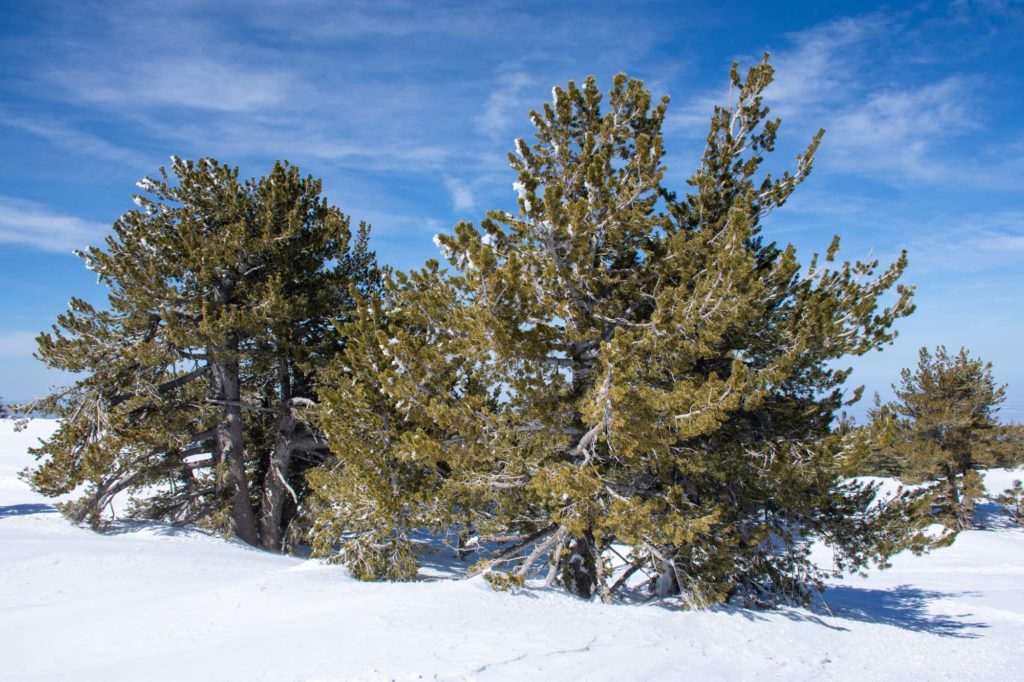
Pinus flexilis
While common in the Rocky Mountains, the limber pine is harder to find in California. Most populations in the state are in the eastern Sierra Nevada, but surprisingly, the Los Padres National Forest contains the westernmost limber pines in the world. And our two local populations are found only atop Mt. Pinos (8,847 ft) and adjacent Sawmill Mountain (8,818 ft).
Description
Technically the limber pine can grow up to 80 feet tall, but that’s unheard of among the small populations on the summits of Mt. Pinos and Sawmill Mountain. There it may grow 20-30 feet but is usually shorter. The common name (and its scientific name) come from the fact that its branches are very pliable and, along with its trunk, can be quite twisted—especially when growing on exposed, windy sites like our local 8,800-foot summits. Many of the limber pines in this area are extravagantly contorted.

Unlike the Jeffrey pine (Pinus jeffreyi), which can be found scattered on the Mt. Pinos summit as well, the limber pine has relatively short, bluish, and fragrant needles that come in bundles of five (Jeffrey pine has long needles in bundles of three). Sometimes the needle bundles are tightly packed and may look like thick fir needles.

At between 20 and 40 years of age, limber pines will start to produce seed-bearing cones. These cones are usually about six inches long, smooth, and covered in globs of whitish resin. Seed cones tend to be found at the ends of branches, often in groups of three or four. In the Sierra Nevada, limber pine cones may be confused with whitebark pine (Pinus albivaulis) or western white pine (Pinus monticola), but neither of these species occur in the Los Padres National Forest. Its cone can be easily distinguished by the larger cone of the Jeffrey pine, which also has curved spines at the end of each scale.
Help from a Feathered Friend
Over the decades, ecologists have discovered that the limber pine mostly spreads and regenerates thanks to the Clark’s Nutcracker (Nucifraga columbiana). This large bird that’s related to crows, jays, magpies, and other corvids is one of the primary disperser of limber pine seeds. In fact, scientists suspect that Clark’s Nutcrackers and limber pines have co-evolved a type of beneficial relationship called mutualism.

While the cones are still a little green and slightly closed in late summer, Clark’s Nutcrackers will remove cones entirely and take them elsewhere to peck the seeds loose. In the fall, these birds will also remove seeds from open cones. In a feat that would make a chipmunk feel insecure, Clark’s Nutcrackers can store up to 125 seeds in a unique pouch under its tongue for travel. They often fly to a special spot where they will cache the seeds for later use. These caches later serve another purpose: they act as a refuge for seeds during a wildfire. Most limber pine regeneration following a fire is due to Clark’s Nutcracker seed caches in the soil.
Conservation
Because it is found mostly at high-elevation, rugged sites, the limber pine is not as threatened by logging and other human activities as many other pine species. However, as a type of white pine, this species is at risk from the white pine blister rust—a non-native fungal pathogen that has been working its way through the western U.S. for decades. Fortunately, this invasive pathogen is not known to exist in the Los Padres National Forest.
We will continue to keep a close eye on the Los Padres National Forest’s small populations of this special tree.







